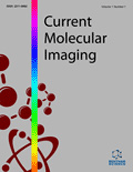Abstract
Purpose: Cell surface antigens as biomarkers suggest high potential for early diagnosis in cancers. The scope of this study is to synthesize Gd3+ based silica nanoparticles that conjugate on monoclonal antibody C595 by a facile method in order to detect human prostate cancer cells.
Method: In this study, monoclonal antibody C595, anti-MUC-1, was conjugated on Gd3+-based mesoporous silica nanospheres (MSN-Gd3+-C595) (71.1 nm) by utilizing N-5-Azido-2-nitrobenzoyloxy succinimide (ANB-NOS) cross linkers. This contrast agent was characterized using techniques such as nitrogen physisorption, thermogravimetric analysis, scanning and transmission electron microscopy, inductively coupled plasma atomic emission spectrometry (ICP-AES) and Dynamic Light Scattering (DLS). The relaxivities were determined using a 3 Tesla MRI scanner. The accurate and easily available in vitro assay based on MSN-Gd3+-C595 was applied to identify the cell surface antigen expression in the case of prostate cancer cells and the quantitative data were analyzed.
Results: Results showed that N-5-Azido-2-nitrobenzoyloxysuccinimide cross-linkers were suitable for conjugation of C595 on the surface of mesoporous silica nanospheres. Protein measurement assay indicated that 8% antibodies were attached on the surface of mesoporous silica nanospheres and TGA and ICP-AES results demonstrated that 19 wt% Gd3+-DTTA were loaded into C595-MSN-Gd3+. Furthermore, the obtained data showed a powerful relaxations as well as selective MUC-1 antigen binding to the cell.
Conclusion: Based on the results of the present study, MSN-Gd3+-C595 nanoprobe may be a potential prostate molecular imaging and may provide critical guideline in selecting these nanoparticles as an appropriate contrast agent for nanomedicine applications.
Keywords: Prostate cancer cells, gadolinium, Mab C595, mesoporous silica nanospheres, MRI.
 29
29

